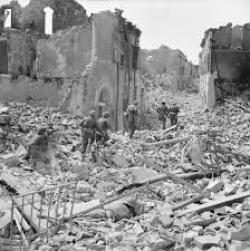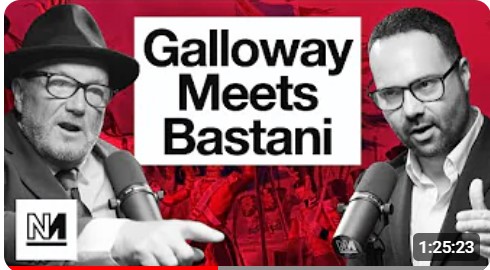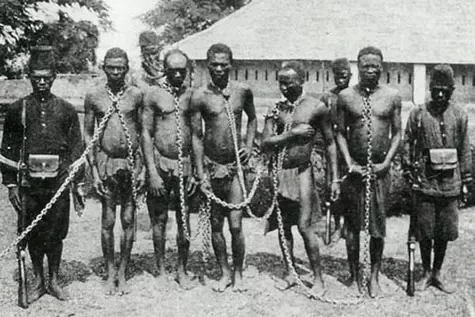By John Pickard
As we might have anticipated, the general tone of the VE-Day coverage in the press and on TV last Friday was Union Jacks galore, pictures of Churchill and interviews with World War II veterans. There were even barbecues and street parties in a few areas – all socially-distance protocols observed, of course – and the mood music, again, was one of celebration, jingoism, and flag-waving.
May 8 seventy-five years ago was indeed a day of celebration, but it was only a brief respite, an outpouring of joyous relief in what was otherwise an atmosphere of gloom, mixed in with a grim determination to put things right. That was true at least in Britain, but across parts of Europe it was far worse and the further east one went, the fewer the celebrations and the darker the mood. In Britain, despite all the hardships and sacrifices, conditions were far better than elsewhere on the continent where the end of the war was more a time for counting the cost and trying to survive rather than partying.
The climate of celebration in Britain was heavily overshadowed by the awful realisation of what the war had cost and might yet still cost, because the war in Asia hadn’t then ended. Unaware of the atomic bomb that was in development, there was an expectation that the war would go on for another year or eighteen months.
Hardships, sacrifices and family members lost
The war cost Britain around a third of a million lives lost, most of them service personnel. The 50,000 tons of bombs dropped had destroyed 200,000 homes and damaged four and a half million more. London and industrial cities like Coventry had suffered a disproportionate amount of damage. Out of 12,000 homes in Clydebank just outside Glasgow, for example, only eight were undamaged.
It was the personal costs of the war in terms of the hardships, sacrifice and family members lost, that gave an impetus to the election of the Labour government two months later. There was a generalised feeling across the whole of the working class that there could be no going back to the insecurities and uncertainties of the 1930s. After the First World War, there had been the promise of a ‘land fit for heroes’ but it hadn’t materialised. Instead, those post-war years saw mass unemployment, austerity, strikes and struggles.
During the Second World War, so-called Mass Observations took place, setting down, through interviews, the views of thousands of people and these showed the mood of workers and different sections of the population. The records of these interviews still exist today and many are quoted in David Kynaston’s book, Austerity Britain 1945-51. Mass Observation noted the high importance that people put on the provision of jobs, decent living standards and housing after the war. Typical comments recorded by MO reflected the powerful class feelings of workers.
“…Chaps aren’t going to stand for it”
“There’ll never be much improvement so long as the country is run by people with money…MPs have no worries, they’ve all got money in the bank…” were typical comments. When it came to demobilization, the MO replies were no less class conscious: “It’ll be the same old story, those who can pull the strings will be all right, the other poor buggers will look after themselves…Personally, I don’t trust the government and I don’t suppose they’re likely to worry much about us. We’re heroes while the war’s on, but we can look after ourselves afterwards…I can’t see they can afford to unload everyone at once, or there’ll be a lot of trouble. Chaps aren’t going to stand for it…” We will carry an article in Left Horizons soon on the road that led to the Labour election victory in July 1945, but these interviews give a clue as to why that happened.
But if conditions were difficult for workers in Britain, on the continent it was worse. The French city of Caen, nearest to the Normandy landings, was virtually destroyed. Le Havre suffered 84 per cent damage. Many other towns and cities in France suffered comparable devastation as they were fought over street by street and district by district in 1944-45.
And the further east you went in Europe, the grimmer it became. Large tracts of eastern Europe were a wasteland, like a moonscape. In Warsaw, 93 per cent of buildings were destroyed or damaged beyond repair. For Budapest, it was 83 per cent, Minsk 80 per cent. Kiev, Kharkov, Rostov, Voronezh and other cities in Ukraine and Russia were reduced to rubble, holes in the ground where people were forced to go on living for many months afterwards.
Cities reduced to rubble
For the defeated population of Germany, it was not much better. Keith Lowe’s book, Savage Continent, Europe in the aftermath of World War II, describes the devastation there. “Berlin lost up to 50 per cent of its habitable premises, Hanover 51.6 per cent, Hamburg 53.3 per cent, Duisburg 64 per cent, Dortmund 66 per cent and Cologne 70 per cent.” Between 18 and 20 million Germans were homeless; 10 million Ukrainians had no homes. In the USSR, 70,000 villages had been completely destroyed, along with buildings and all their infrastructure.
It would take a lot more space, in fact several books, to catalogue the destruction of buildings, economic structures, agriculture and human lives.
The Second World War was, and still remains, the bloodiest conflict in the whole of human history. In Europe alone, it cost somewhere between 35 and 40 million lives. Casualties in France, Italy, Holland, Belgium, Norway and Denmark are comparable to those in Britain but, again, the further east one goes the greater was the death toll. Germany lost six million, a quarter of them civilians. Greece’s 400,000 dead represented 6 per cent of the pre-war population. Hungary’s 450,000 was 5 per cent. As a nation, Poland, Ukraine and Russia suffered the greatest proportional losses: more than one person in every six in Poland and one in every five in Ukraine died in the war. By far the greatest national losses were suffered by the USSR, with around 27 million dead. There were in addition to this the destruction of six million Jews and other national minorities in a deliberate and systematic campaign of eradication, a holocaust conducted with ruthless, industrial efficiency.
Labour movement organisations obliterated
What is not mentioned in VE Day programmes and articles is that the war unleashed a wave of reactionary nationalist pogroms that manifested across eastern Europe in particular after the defeat of Germany. During the years of Nazi occupation, as it had been in Germany itself, the organisations of the working class had been completely obliterated, so with the end of official hostilities there were no organisations that could protect or support workers across these states.
Many of the extreme right-wing nationalist groups in eastern Europe had actively collaborated with the Nazis, like the Ustashe, who massacred over half a million Serbs, Muslims and Jews in Croatia. There were tens of thousands of Poles killed by Ukrainian nationalists, Ukrainians killed by Polish nationalists, Hungarians killed by Serbs, Bulgarians killed by Greeks and so on. Following the military defeat of Germany many of these groups did not disappear and, in some cases, they were strengthened and emboldened.
In the vast area of Europe occupied by the Nazis, all of the ‘subjects’ of the Reich were classified by their race or ethnicity. In the aftermath of the war, millions would be forcibly ejected from the areas they had inhabited for centuries, purely based on what was written in their wartime identity cards, and many thousands of these were killed.
It was after the official ‘end’ of the war, not during the war, that there was a massive ethniccleansing of Ukrainians and Poles as the two states, newly liberated by the Red Army, turned a blind eye to their own nationalist militias conducting pogroms. The region of Eastern Poland and Western Ukraine was in a state of virtual civil war, with beatings, massacres, mass expulsions and hundreds of thousands forced to flee for their lives.
In every state where there had been minority populations of German-speakers – Poland, Czechoslovakia, Romania, the Baltic states and elsewhere – they were driven out after the war, adding to the millions of homeless Germans and the millions of ‘displaced persons’ who needed to be supported.
Post-war pogroms and ethnic cleansing
Despite the unbelievable privations and suffering of the Jewish population of Europe, the hundreds of thousands of camp survivors were often subjected to new pogroms, this time from right-wing nationalist groups, particularly in Poland and Ukraine. Hundreds of thousands of impoverished and homeless Jews drew the understandable conclusion that there was no safe place for them to live in Europe and an exodus to Palestine gained momentum.
There were nine million non-Germans working in Germany factories and mines as forced labourers, slaves in effect, and they needed to be repatriated, assuming there were even homes to go to. Central and Eastern Europe was awash with millions of destitute and literally starving displaced persons. Then there were 11 million German prisoners of war, many of whom – those captured by the Red Army – would die during their incarceration or who would not see their homes again for five or six years.
A fight between two European imperialist powers
The most destructive war in human history was never essentially a war against fascism, although it was convenient to dress it up as such to win the support of workers in Britain and the USA. In Europe, it was essentially a fight to the death between the two great imperialist powers, Britain and Germany, for economic and political dominance. In many parts of Europe liberated from the Nazis, those politicians and business people most closely aligned with the occupiers managed to get away scot free and many found themselves back in positions of leadership in a short space of time. Even while workers in London were celebrating on May 8th, their compatriots in the British Army were still in Greece, fighting alongside those who had collaborated with the Nazis, against the Greek communist partisans who had fought the Nazis. Churchill’s aim in Greece was above all to prevent revolutionary change and maintain British and western hegemony in that country.
Right wing nationalist movements today
The point, therefore, is that that war is not about waving flags. It is about death and destruction and little else. That is the real lesson of V-E Day, not street parties and bunting. We need to discuss and learn the real meaning of war and this one in particular: its causes and its political aftermath.
Many of the right-wing nationalist movements that are rampant today, particularly (again) in Eastern Europe are descended from the same pogromists of 1945-46 and, indeed, they celebrate the ethnic cleansers of that period as national heroes today. The events of the immediate post-war period are both a lesson and a warning to the labour movement. Unless we are prepared to learn from history, we are doomed to repeat it.
May 11, 2020



